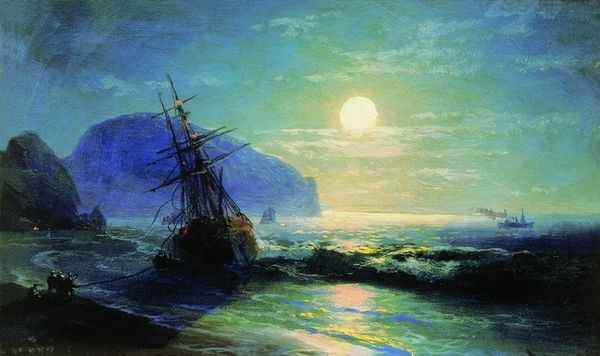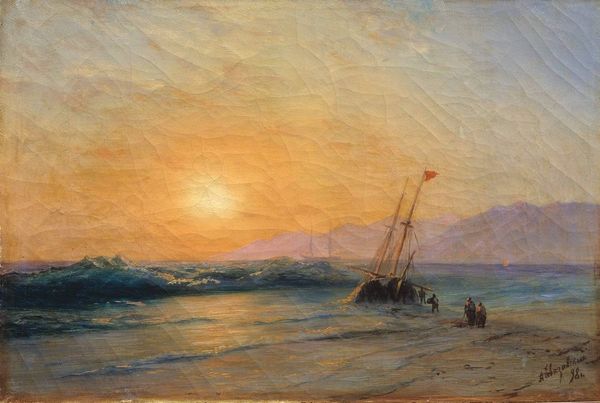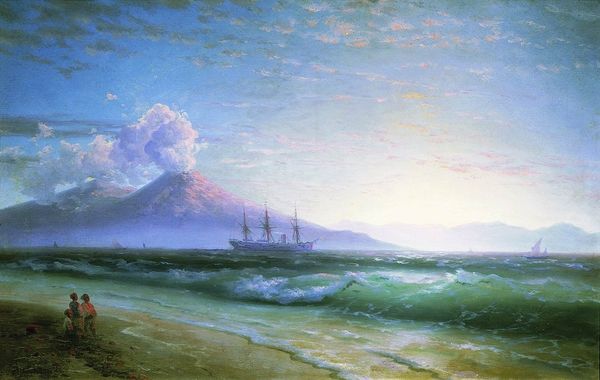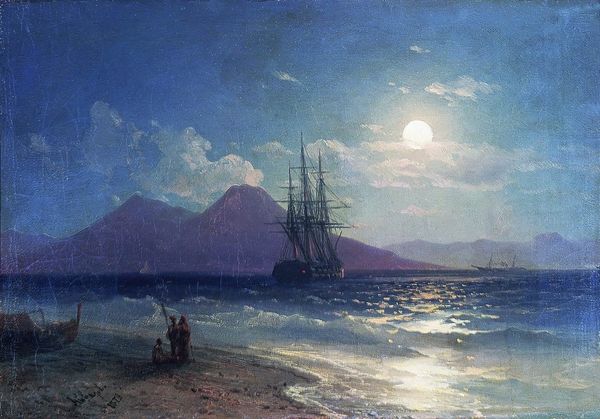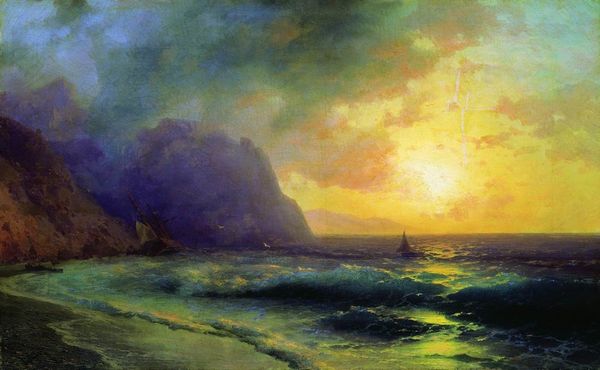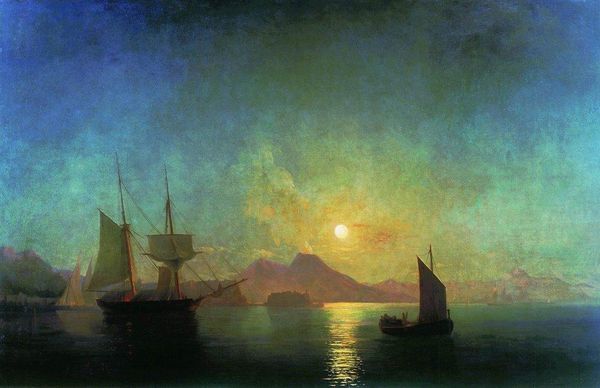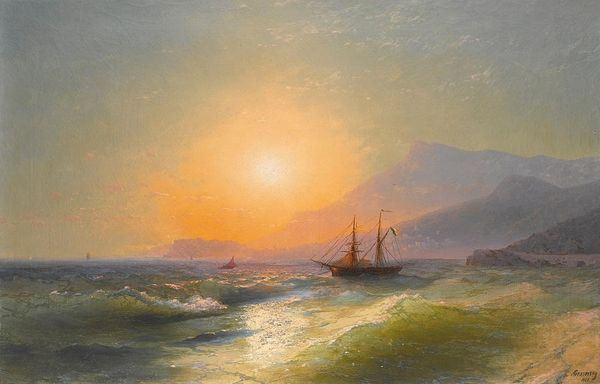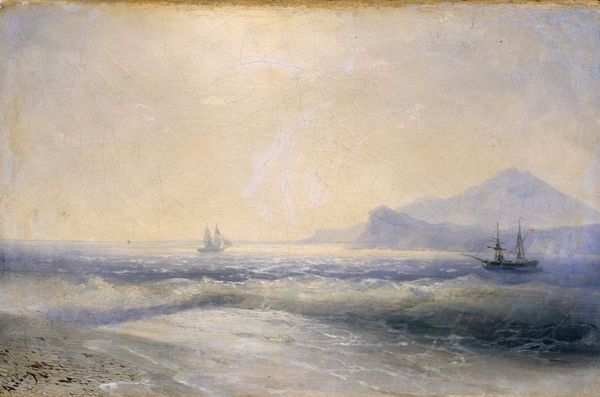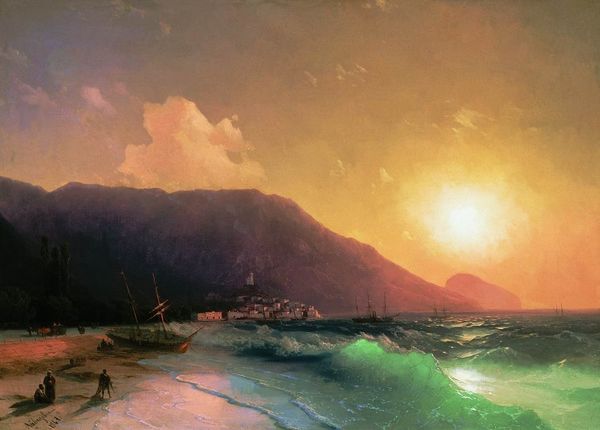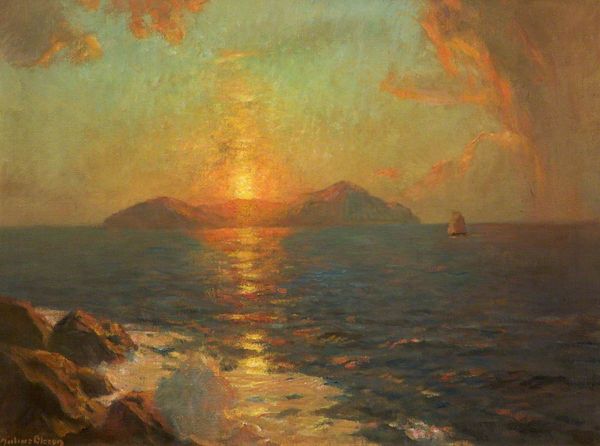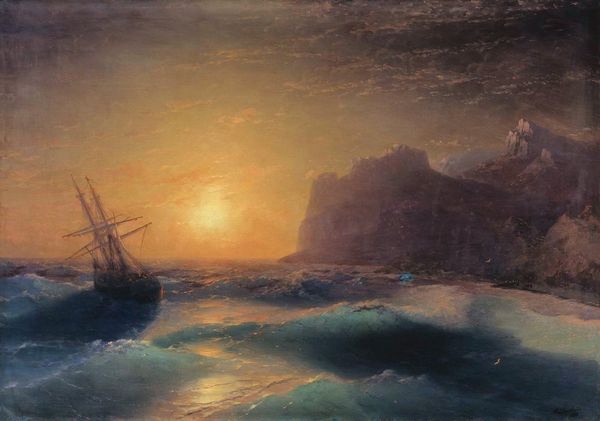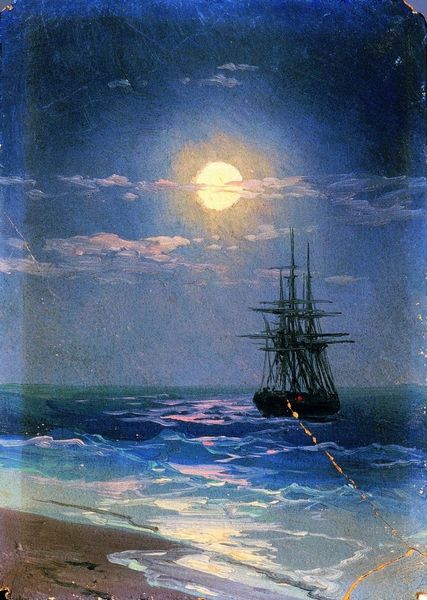
Copyright: Public domain
Curator: Look at this arresting nocturne—it’s Ivan Aivazovsky's "The Bay of Naples at Night," painted in 1895. A masterful oil on canvas. Editor: There's something about that light that captivates me. It's ethereal, almost dreamlike, but it struggles against this brooding darkness from the erupting volcano. Quite the striking juxtaposition! Curator: Aivazovsky was fascinated by the sea, as we can see through the impasto technique to give texture to the water. Remember, during the 19th century, Naples, and Italy in general, were major destinations for artists. Painting these vibrant locations was vital to an artist's success at that time. Editor: Indeed! And this sky... the light appears almost to bleed down from the heavens, illuminating these meticulously-rendered waves. The eye bounces effortlessly across the composition. What an interesting usage of the chiaroscuro with such cool tones dominating the palette. Curator: This location would have been perceived as this mystical faraway location. Aivazovsky tapped into a market desiring a romantic depiction of the Mediterranean. I imagine he was capitalizing on those aesthetic trends, those desires to gaze upon the 'Orient,' even within Europe. Editor: Perhaps, but look at that impasto creating depth within the waves! The luminescent surface of the ocean seems to almost ripple outward. Do you think that is evidence to move past this market? I think this level of painterly mastery transcends the commercial intent, which makes it interesting to examine even now. Curator: Absolutely. And don’t forget how portrayals of Vesuvius, both in eruption and dormant, contributed to Europe’s understanding and perception of the volatility and the power of nature, reflecting humanity’s small place in that world. Editor: Well, whatever the motivation, there’s an undeniable drama, a tension present, achieved through technical means. It’s certainly effective. Curator: Absolutely, viewing art through both lenses gives a fuller image. The composition creates an alluring, impactful vision and allows us to look closer to what could've shaped this creation. Editor: Precisely! We each perceive the work from a different approach. However, it's beautiful in its visual presentation and context, no matter the way of seeing it.
Comments
No comments
Be the first to comment and join the conversation on the ultimate creative platform.
